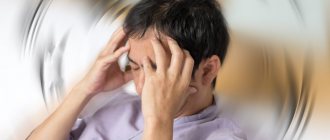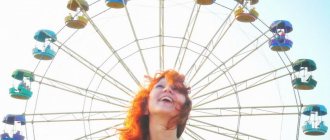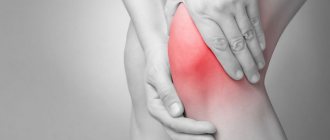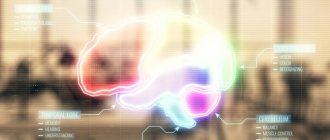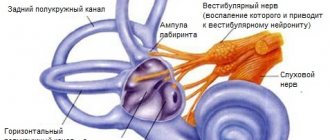What is unsteadiness when walking?
Unstable movements may appear systematically or be present constantly. The clinical picture may worsen due to external stimuli or arise due to the development of inflammatory processes.
Quite often, a person, along with instability in movements, also experiences other unpleasant sensations when walking , signaling a disease that provokes unsteadiness of gait (skidding when walking). Additional manifestations include migraine, loss of orientation in space, numbness of the limbs, a sharp loss of strength, and so on.
Human movement is carried out using muscles, joints and bone structure. And this process is controlled by the cerebellum, organs of vision and vestibular apparatus. The spinal cord conducts impulses that travel to the lower limbs and encourage them to move. After receiving the “command,” the muscles set the entire bone system in motion. If the passage of the impulse is disrupted for some reason, it will not give the correct “command”, and naturally the legs will not move correctly, making the walk shaky and uncertain.
In addition, it staggers when walking and with various problems with the musculoskeletal system . In this case, the legs simply will not be able to carry out “commands” correctly. And if there are problems with the cerebellum, then the “command” itself will be absent.
Important! Before starting therapy, it is imperative to identify the cause of the disorders, since treatment will vary in each specific case.
Worth being wary
Since incoordination is not as harmless as it may seem, you should immediately consult a doctor if the following signs appear:
- stumbling became more frequent, often on a completely flat surface;
- weakness occurs in the legs, which leads to a fall;
- for some unknown reason, coordination of movements is impaired, the motor process is poorly controlled;
- the gait becomes unnatural, sweeping;
- after a long walk, a sudden stop occurs and there is a feeling that the next step is impossible to take;
- due to muscle weakness, the legs become weak, you can only walk on bent legs;
- when walking, the body falls to one side;
- difficulties appear when walking up the stairs;
- When walking, the foot rests more and more on the heel;
- when you want to get up from a sitting position, you fall;
- after the legs have rested for a long time, movement becomes tense and difficult.
At the same time, a tremor of the whole body may appear, the head may begin to spin, a pounding in the temples may appear, the vision will darken, the outlines of objects will be blurred or split into two. Such a rapid onset of an inexplicable condition causes panic, nervousness, and fear.
These are pronounced symptoms of certain diseases and cannot be ignored.
What could be the reasons?
In medicine, there are 3 categories of diseases that can be accompanied by staggering when walking:
- Disturbances in the functioning of the musculoskeletal system - vertebral and craniocerebral injuries, bruises and damage to the muscles of the lower extremities, osteochondrosis, flat feet, arthrosis, muscle atrophy.
- Pathological processes in the brain are damage to the parts that are responsible for coordinating all movements and monitoring the operation of the motor system. For example, hemorrhagic stroke, brain tumors, VSD, inflammatory processes in the brain, malfunction of the central nervous system, atherosclerosis, congenital anomalies of the cerebellum, meningitis, improper use of neurotoxic drugs, as well as the development of polyneuropathy.
- Disorders in the psycho-emotional state - stress, nervous breakdowns, depressive states, panic attacks, neuroses, psycho-neurological disorders. This also includes alcohol poisoning.
The influence of drugs and alcohol on the nervous system is very strong. Once toxic substances are in the body, they quickly penetrate the blood and spread to all tissues and organs. In addition, alcohol in the body begins to decompose, resulting in the formation of acetaldehyde , a toxic substance that has a detrimental effect directly on the cerebellum.
Important! Under no circumstances should you take medications, including painkillers, together with alcohol, as the consequences of this can be completely unpredictable.
How can a doctor help?
It is impossible to make a diagnosis on your own when the patient sways from side to side. Diagnostics are carried out only by specialists. Doctors use a number of methods to accurately determine the root cause of the phenomenon, the first of which is observing the patient’s movements. For example:
- look at the movement in the direction forward with the face, forward with the back;
- movement in a straight line forward with the left side, then with the right;
- change the rhythm of the step from fast to slow and vice versa;
- gait with eyes closed is examined and compared with gait with eyes open;
- walking up the stairs;
- circular motion (for example, around a chair);
- offer to make turns while walking;
- consider walking on toes and heels.
Based on the results obtained, the patient is prescribed:
- undergoing an MRI;
- CT;
- X-ray;
- general and biochemical blood test;
- a referral is given for a study of the liquor fluid;
- a biopsy of muscle tissue is performed;
- stabilography is performed.
In addition, the patient is sent for examination to an otolaryngologist, ophthalmologist, or endocrinologist.
Only after completing all these procedures will the patient be given an accurate diagnosis and treatment prescribed.
Even folk remedies should be taken only after consultation with professionals.
Any medications must be prescribed by a licensed physician. He will select medications based on the individual characteristics of the body. What helps one person can cause irreparable harm to another.
Old age and its impact
Quite often, swaying when walking is observed in people over 60 years of age. Such patients feel dizzy, spots appear before their eyes, tinnitus appears , and the patient experiences frequent and severe headaches. In most cases, people attribute such symptoms to age-related changes and do not consult a doctor about it. However, in some cases, such symptoms indicate disturbances in the functioning of the body, which can be controlled with timely consultation with a specialist.
One of the common causes is a malfunction of the heart and blood vessels of the brain. In addition, gait can be affected by increased blood viscosity, injuries and diseases of the spine.
Older people who walk unsteadily may feel disorientated and may develop fears and anxiety. Therefore, you should not delay your visit to the doctor, as the consequences can be very disastrous.
Who to contact
Often the patient himself understands that specialist help is needed. But it’s not always clear which doctor to contact. Therefore, you need to carefully listen to the symptoms, and based on this, choose a doctor.
- cardiologist – if, in addition to gait disturbances, there is often high blood pressure, or there are diseases of the cardiovascular system;
- neurologist - you need to go to him when you experience stress, nervous disorders, and other mental manifestations;
- traumatologist, orthopedist – for injuries, muscle or joint pain;
- surgeon – needed for serious injuries.
If you have not been able to identify the symptoms on your own, or you are not sure of the correct definition, that is, it seems that there are signs of several diseases at once (this happens when the heart hurts from nervous stress), you need to consult a therapist.
“Fuzzy head” is one of the main signs of astheno-neurotic syndrome
If “fuzzy head”, “cloudy head” is the feeling with which you get up and lie down, and if increased irritability, fatigue and poor sleep are added to this, most likely we are talking about astheno-neurotic syndrome
.
Main symptoms:
Many people complain of “fog in the head”, “head like cotton wool”, “fuzzy head” and similar symptoms.
If you notice fatigue, sleep disturbances, and constant irritability, then you may have a mental disorder called astheno-neurotic syndrome.
Prevalence:
This disease is one of the most common “diseases of civilization.” It is often called "managers' flu."
Educated and successful people are susceptible to the disease. The most typical age is from 20 to 40 years. These are entrepreneurs, managers, doctors, teachers. People whose work involves increased responsibility, such as air traffic controllers, are at particular risk.
In the past, astheno-neurotic syndrome was called “nervous exhaustion”
Creative individuals are also at risk.
Causes:
The main causes are stress, prolonged nervous excitement, chronic lack of sleep, and constant overwork. Also factors contributing to the occurrence of astheno-neurotic syndrome are previous diseases, including colds, some viruses, poisoning, and poor environmental conditions.
Similar symptoms:
What diseases can manifest themselves as “foggy head”, poor sleep, weakness and irritability, except neurasthenia? First of all, these are asthenic conditions with the onset of serious illnesses. The second is masked depression, which at the beginning can easily be confused with astheno-neurotic syndrome. And chronic fatigue syndrome can manifest itself in a similar way.
So only a psychotherapist or psychiatrist can make a correct diagnosis. To make a diagnosis, professional psychological diagnostics (psychotests) are usually used, which you can take yourself (follow this link).
How the disease develops:
The syndrome occurs gradually, with a combination of emotional and physical stress, constant fatigue. Most often, patients complain of loss of strength, general weakness, increased irritability, “fog” in the head, and inability to cope with normal amounts of work.
If a person continues to be exposed to stress and does not seek medical help, his condition worsens - the usual set of complaints about a “cotton” head is joined by tearfulness, complaints about the heart, and fog in the head. Irritability increases to an extreme degree, but irritation quickly gives way to weakness. Sleep is usually unstable, does not bring a feeling of rest, and after sleep the head feels like cotton wool. Appetite worsens, constipation or diarrhea may bother you. Sexual desire decreases in both men and women. The condition worsens before a change in weather (so-called “meteosensitivity”). In the absence of treatment at this stage, apathy, lethargy, severe weakness and persistent depression of mood are further added. Interest in life decreases, the patient thinks only about his painful condition, about his “fuzzy” head.
Left untreated, psychotic disorders may develop.
Treatment:
The prospects for treatment are positive; usually psychotherapeutic methods give excellent results, including complete recovery. In severe cases, a combination of psychotherapy and psychopharmacotherapy is used.
Self-medication usually worsens the condition and leads to progression of the disease.
At the initial stage of the disease, in order to make a correct diagnosis, a psychotherapist needs to exclude all diseases that exhibit similar symptoms, because the more accurate the diagnosis, the more successful the treatment will be.
Different diseases with similar symptoms must be treated differently. Therefore, you should definitely consult a psychotherapist. A good psychotherapist selects therapy that matches the specific manifestations of the disease and the individual characteristics of each patient.
Astheno-neurotic syndrome is one of the most common “diseases of civilization.” It is often called "managers' flu."
Treatment of the syndrome depends on the severity of painful symptoms, but is primarily aimed at eliminating psychotraumatic factors. It is necessary to reduce both mental and physical stress. This is the most important condition for treatment; without such measures it will not be possible to defeat the disease. In the early stages of the disease, normalizing the rhythm of life, eliminating stress and psychotherapy may be enough to significantly improve health. And, of course, at this stage, psychotherapy methods that do not use drugs - cognitive-behavioral, psychoanalysis - have a very good effect, and group psychotherapy methods are very effective.
In any case, you need to see a psychotherapist.
In more advanced cases, additional psychopharmacotherapy may be required. General strengthening drugs, tranquilizers, and, if necessary, sleeping pills and antidepressants are used. Psychotherapy is also actively used in the treatment of advanced astheno-neurotic syndrome.
The first indicator of improvement is the normalization of sleep and the disappearance of the feeling of “fog” in the head. With timely treatment, the problem can usually be completely overcome, however, if the tense environment and stress at work and in personal life continue to persist, various complications are possible.
Terminology and other names:
In the past, astheno-neurotic syndrome, together with diseases of similar symptoms, was called “nervous exhaustion.”
In modern psychiatry, the term “neurasthenia” is more often used to refer to neuro-asthenic syndrome (synonyms). In the everyday sense, neurasthenia is usually perceived as a painful, nervous, unbalanced state, characteristic of weak-willed people, easily susceptible to various influences and moods, and in a state of acute mental crisis. And in the medical sense, this is a state of depression, irritability, “fuzzy head.”
help yourself
Is it possible to help yourself on your own, at home? Can. But you should not self-medicate; it is best to prevent the possibility of the occurrence of such diseases than to treat them for a long time.
Injuries are difficult to insure against. However, you can make your body more resilient. The following factors will help to achieve this:
- proper nutrition (for the strength of the bone structure);
- walks in the fresh air (to saturate the blood with oxygen);
- regular ventilation of rooms;
- hardening the body to strengthen the immune system (this will protect against many diseases and their complications);
- systematic visits to the clinic for preventive examination;
- rejection of bad habits;
- correct daily routine;
- training to manage your emotions (to avoid depression and nervous breakdowns);
- reasonable alternation of calm and active activities;
- massage;
- playing sports and exercising to strengthen muscles.
Several special exercises have been developed that can be performed anywhere and by people of all ages.
- In transport, it is better not to sit on an empty seat, but to stand with your legs wide apart, trying not to stagger when traffic moves and to maintain your balance.
- Place your feet together and extend your arms forward. Rise and fall on your toes, closing your eyes. Repeat several times.
- Arms to the sides, legs together. Stand with your eyes closed for 30 seconds, then lower your arms and stand in this state for 30 seconds.
- Hands on the belt, legs together. Rise on your toes, simultaneously tilting your head forward, then back.
- From the same position, bend your whole body forward and backward, then to the sides. Rotate your torso.
- Do exercise No. 5 with your eyes closed.
- Place your left foot with your toe towards the heel of your right foot. Stand in this position for 15-20 seconds. Then change the position of your legs.
- Perform the “swallow”. In this case, it is not so important to ensure that the leg is raised high, the main thing is to maintain balance.
- Raise your leg first to the left and then to the right, in a slow rhythm. There is no need to raise your leg high, the main thing is to maintain a stable balance.
- Try yourself as a juggler. Throw up and catch an apple or orange with one hand. If the result is successful, you can toss two fruits alternately.
- Walk exactly along one floorboard. The floorboard can be drawn with chalk. You can simply try to walk along the supposed straight line. Repeat the same movement with your eyes closed. The main thing is that the intended line is smooth (with your eyes closed, it is important that there is an outside observer).
- Don't miss curbs on the street - walk along them.
These simple exercises will help not only maintain coordination of movements of the whole body, but also increase your own confidence in your health.


